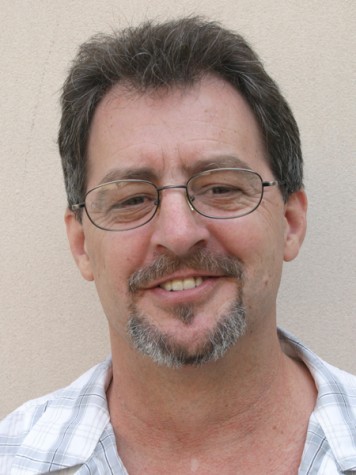The Fernandeño Tataviam Band of Mission Indians launched a new website on Sept. 3 at Pasadena’s chic Bar Celona. The event celebrated the creation of the first-ever social networking site for Native Americans.
“Ndn.me [http://ndn.me] was two years in the making,” said Rudy Ortega Jr., tribal administrator. “We were inspired by the success of Facebook and MySpace, but wanted a design that was more intuitive to use, and [geared to] the [Native American] community.”
A grant from the 2009 American Recovery and Reinvestment Act helped make this possible. The Pahi Creative Group, a native-run creative agency started by the Tataviam tribe, stepped in to make the concept a workable reality. Dakotah, the primary Web designer, said that the actual nuts-and-bolts site construction and programming took “about six months,” but that there are still some use issues that need to be resolved. “We only went live three days ago,” he said.
The concept is simple, but the implications are huge. This is the first time a social networking site has been created exclusively for people of the First Nations.
“We want to get the word out to all the tribes and connect even the smallest communities,” said Austin Martin, the youngest member of the Tataviam tribal senate. Pressed as to whether the site was aimed at attracting younger users, he demurred. “No, this site is for everybody, and a lot of our tribal members are on Facebook anyway. This is another way that they can connect.”
Ndn.me’s tagline “where we connect,” has more implication and nuance than MySpace’s “a place for friends” or Facebook’s utilitarian “a social utility that connects you with the people around you.” “Connect” implies membership in the tribe of all indigenous people, and ndn.me is to be a forum for that tribe.
Cheryl and Aaron Martin were among the 40 attendees. Like most, they hadn’t signed up for the free service yet, but were interested. They both use Facebook. Robert Young II, the creative/marketing director of The Pahi Creative Group, circled the room with an iPad, signing up all the attendees. New members can join through their Facebook account (photo and information are imported to ndn.me) or join through the site’s hompepage.
Tribal connection is selected from a drop-down menu. “Glitches” have arisen and have been worked out; the site is evolving.
“We’re waiting to see what our users want,” said Young gamely answering a question about internet dating and suggesting rezfox.com as an alternative service.
Ndn.me offers events and a news feed for Native American issues. Potentially, political mobilization, or at the least activism on the part of Native American issues could be an outgrowth of the site. “Well, yes, that is a possibility,” concurred Ortega, but he was adamant that the primary purpose of ndn.me is to provide a forum for Native Americans – all Native Americans and not just the Tataviam. “Ndn.me is about building communities and supporting a way for native people to connect, find local events and keep in touch with local tribes and groups. It is about sustaining our heritage,” he said.
Young added that the Pahi Creative Group is looking forward to a period of exponential growth as more tribal groups engage with the system. He anticipates expanding into Canada and suggested that even simple gestures – reciprocal hunting/fishing arrangements on tribal land facilitated by the social network – help build bonds between tribes, some of whom are relatively small and isolated.
The Pahi Creative Group (“pahi,” which means “three” in the Tataviam language) considers the diverse media work that they do for a Native American Client base, including redesigns of the Native American Indian Commission (NAIC) and American Indian Community Council (AICC) Web sites, to boil down to three basic concepts: Listen. Research. Create. Now they’re listening again – how will the Native American community receive ndn.me?
Stephanie Saavedra, a San Diego resident of Otomi/Pueblo origin, learned about ndn.me from the American Indian Chamber of Commerce of California. She is the Southern California distribution representative of Vinetou, a subsidiary of Indigenous Wine, a majority-owned Native American winery.
Saavedra’s primary interest was business opportunities afforded by social networking, but she also has an active role in mentoring and finding scholarships for Native American students.
“When we started AIR [American Indian Recruitment], the high school graduation rate for native kids was only 20 percent,” she said. “And last year, we graduated all the kids in the program.”
Jim Ruel, from mixed Ojibwe heritage, was also promoting his business – a comedy show he presents called “All Mixed Up,” which features Native American and mixed-race comedians. “All Mixed Up,” will be performing tonight [Sept. 15, 2010] at Flappers Comedy Club in Burbank. Ages 18 and up preferred, see calendar section for more details.
The Fernandeño Tataviam Band of Mission Indians’ historic range stretches from the San Fernando Valley and Santa Clarita Valley to the Antelope Valley. Evidence of their culture goes as far back as 450 A.D.
The word “Tataviam” means “people facing the sun,” a reference to their propensity for building on south-facing hills. They maintain their presence today through the works and investments of the tribe and through Pukúu Cultural Community Services, a non-profit organization that serves the needs of the native community in Los Angeles. The “people facing the sun” have become “the people facing technology,” and have come up with a fun and creative way to resolve some of the issues faced by Native Americans – including the increasing isolation of tribal communities.
From a core group of approximately 40 people, ndn.me grew to a community of 520 in a week. Five groups grew into 20. Three different tribal newsfeeds are represented. Sharing heritage is no longer a dream, it’s a reality.
The Pahi Creative Group is seeking investors and advertisers to sustain and expand ndn.me.


